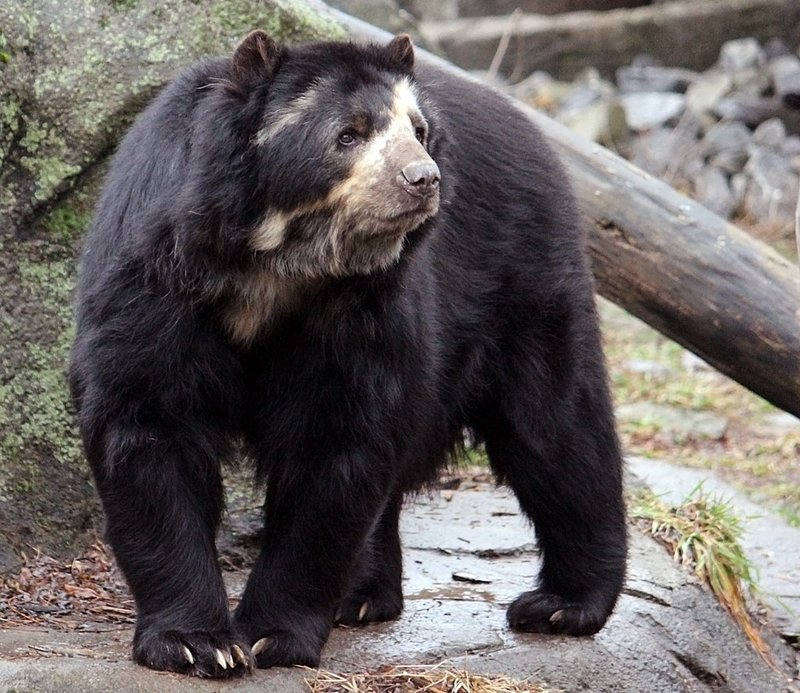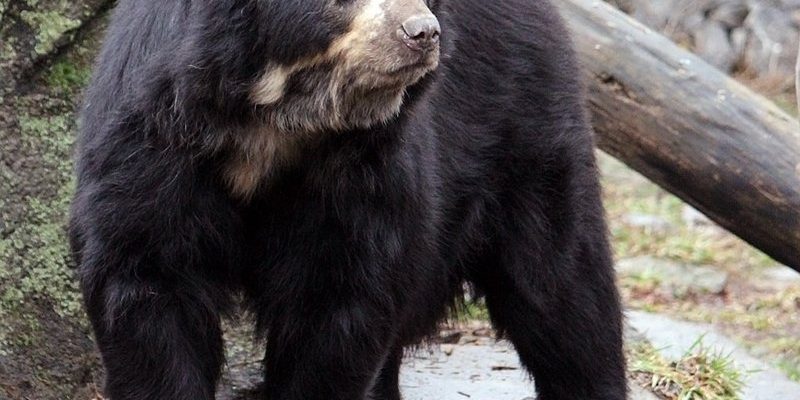
So, you might be wondering, “What’s putting these charming bears in danger?” Well, think of it like a perfect storm—habitat loss, climate change, and human activity all converge to make life tough for them. In this article, I’ll take you through what’s putting the spectacled bear at risk, what’s being done to help them, and what we can all do to support their survival.
What is the Spectacled Bear?
The spectacled bear (Tremarctos ornatus) stands out as the only bear species native to South America. They typically inhabit the Andean mountains, spanning from Venezuela down to northern Argentina. You might picture them as lumbering creatures, cuddly yet wild, and they can weigh between 220 to 440 pounds. They’re primarily herbivores, snacking on fruits, plants, and occasionally insects.
A fun fact about these bears is their unique markings that resemble glasses or spectacles on their faces. Isn’t that charming? These markings vary among individuals, making each bear distinct, much like a fingerprint. Despite their large size, they’re also excellent climbers, often found lounging in trees, enjoying the view and munching on leaves and fruits.
Why Are Spectacled Bears Endangered?
Honestly, if you look at the reasons behind their endangerment, it paints a grim picture. Habitat loss is one of the biggest threats. As forests are cleared for agriculture or urban development, bears lose their homes and food sources. Imagine trying to find a place to live while everything around you is changing rapidly—it’s tough!
Another major concern is climate change. As temperatures rise, the ecosystem that these bears rely on becomes unstable. Plants that they depend on may not thrive in warmer climates, which ultimately affects their food supply. It’s like a chain reaction—when one link weakens, the whole structure starts to wobble.
Additionally, human activities—like poaching and conflict with livestock—further complicate their survival. When bears venture near farms searching for food, they can come into conflict with farmers, leading to tragic consequences for the bears.
Current Population Status
Estimating how many spectacled bears are left in the wild can be quite tricky. Various studies suggest their population might range between 2,000 and 18,000 individuals, but these numbers are often just educated guesses. Many remote regions are challenging to survey, making it hard to get a clear picture.
According to the International Union for Conservation of Nature (IUCN), these bears are currently classified as vulnerable, which means they’re at risk of becoming endangered. With their habitats shrinking and threats mounting, every bear truly counts.
Conservation Efforts for Spectacled Bears
So, what’s being done to save these iconic bears? Luckily, several organizations are stepping up to help. Wildlife conservation groups are working hard on various fronts. They’re not only focusing on habitat preservation but also on local community education. It’s essential to involve local populations, as they play a vital role in the bears’ future.
One promising conservation strategy is creating protected areas and wildlife corridors, which allow bears to move freely between habitats without encountering human threats. Think of it as building a safe highway just for bears! This approach provides them access to food sources and mates, which is crucial for their survival.
Additionally, community engagement is key. Teaching locals about the importance of these bears can change attitudes and reduce conflict. When people understand why these bears matter, they’re more likely to protect them.
How Can You Help Spectacled Bears?
You might be wondering how you, as an individual, can contribute to protecting spectacled bears. Well, there are several ways! One immediate action is to support organizations dedicated to wildlife conservation. Donations can go a long way in funding research and conservation projects.
Another way is to raise awareness. Sharing information about the plight of the spectacled bear on social media can help spread the word. The more people know, the more support there will be for conservation efforts.
Lastly, if you’re ever in South America, consider eco-tourism. Choosing responsible travel companies that promote wildlife conservation can provide financial support to local communities and highlight the importance of preserving habitats. It’s a win-win!
What’s Next for the Spectacled Bear?
Looking ahead, the future of the spectacled bear depends on ongoing conservation efforts and the cooperation of local communities. With climate change challenges looming, it’s crucial to adapt strategies that account for changing environments.
Moreover, more research is needed to better understand their behavior and habitat needs. This knowledge can help tailor conservation efforts to be more effective. Here’s the thing: we need to act quickly. The longer we wait, the more difficult it will be to pull these bears back from the brink.
Collaboration between governments, researchers, and local populations will be essential. By pooling resources and knowledge, we can create a more robust strategy for saving this remarkable species.
The spectacled bear is more than just a bear with a unique look—it’s a vital part of the Andean ecosystem. As they face numerous threats, it’s up to all of us to take action and make a difference. Whether through support, awareness, or responsible tourism, we can help ensure that future generations get to know and appreciate these beautiful creatures. Let’s combine our efforts to keep the spectacular spectacled bear roaming the mountains of South America, where it truly belongs. After all, every little bit counts in conservation, and together, we can create a positive impact!

